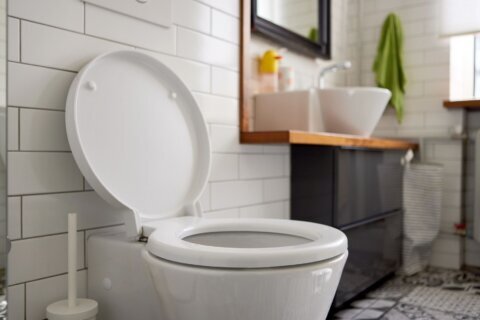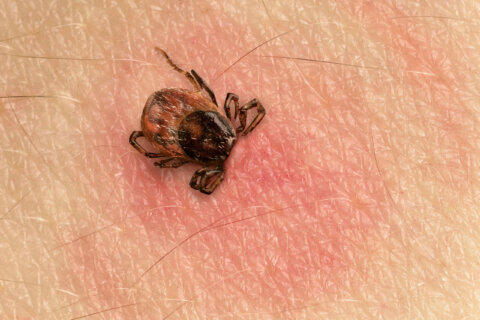What is a muscle cramp?
It can happen after intense exercise or in the dead of night when you’re doing nothing at all but sleeping. A muscle — say your calf — seizes up without warning, leaving you wincing in pain. You’re having a muscle cramp. It’s an uncontrolled contraction of a muscle or part of a muscle, which makes it tighten and causes pain, explains Madhuri Kale, a physical therapist at Brigham and Women’s Hospital in Boston.
Sometimes also called charley horses, muscle cramps usually occur in the larger skeletal muscles, such as those in the legs, and are categorized as either non-exercise or exercise related. The good news is it’s typically temporary and can be soothed with self-care at home.
What causes muscle cramps?
Various factors can contribute to muscle cramps, including launching into an intense exercise regimen without warming up or stretching and then overusing a muscle. Exercise-related muscle cramps are more common than cramps that aren’t related to exercise, says Mark A.W. Andrews, director of physiology at the Lake Erie College of Osteopathic Medicine located on the campus of Seton Hill University in Greensburg, Pennsylvania.
But a lack of muscle use and decreased muscle mass can mean any stress put on the muscle is more likely to result in that muscle cramping. As a result, as people age and muscle and nerve function declines, cramps — including those that aren’t related to exercise — can occur more frequently. Dehydration can increase the chances of cramping as well. Certain conditions like diabetes and thyroid problems, as well as deficiencies in minerals such as potassium, magnesium or calcium can also increase the likelihood of muscle cramps.
When to see a doctor about cramps.
Cramps usually don’t require medical attention. However, if you’ve been having severe or painful cramps frequently, experts recommend getting it checked out. What might seem at first like normal cramps, may be something else, such as a condition called dystonia, which is characterized by frequent, longer-lasting involuntary muscle contractions.
Other underlying conditions like peripheral artery disease — characterized by a narrowing of the peripheral arteries, including in the legs and arms — can reduce blood flow and cause cramps. Taking certain medications, including statins, diuretics and oral contraceptives, can also increase your risk for muscle cramps. So discuss with your doctor what you’re taking as well.
Remedy: Stretch the muscle.
Fortunately, for most who experience occasional muscle cramps, the momentary pain can be soothed at home. Just don’t try to push through the cramp. “Stop using that muscle. Let it relax and stretch it out,” Kale says.
If the cramp is in your calf, try a runner’s stretch: “You want to stretch a calf by pointing your toes up toward yourself,” Kale says. While standing, place the front of your foot against a wall or put your foot on a step and let your heel drop. “Basically decrease the angle between your toes and your shin,” she explains. “So pull your toes up toward yourself — that kind of an angle — and that should help relieve a calf cramp.” Hold a stretch you can tolerate for 30 seconds or more to relieve the tightening of the muscle.
Remedy: Massage the muscle.
Another thing you can do immediately if you have a cramp is to massage the muscle gently. “Massage is going to bring increased blood flow into an area,” Andrews explains. And that’s just what’s needed to help ease your tightened muscle.
“Rub the affected area deeply, as much as you can tolerate that,” Kale says. “Do that for up to a few minutes.” But just as you don’t want to push through a cramp, make sure to massage the muscle in a manner that’s comfortable.
Remedy: Apply heat.
Along with massage, applying heat to a cramped muscle is another way to bring more nutrient-rich blood to the area, says Dr. David Kiefer, a clinical assistant professor of family medicine at the University of Wisconsin.
The increased blood flow coaxed by applying a warm pad to the muscle also helps “wash away” byproducts of muscle contraction, Kale adds. “Typically when a muscle contracts, especially during spasms or cramps, it produces chemicals such as bradykinins, H+ ions and lactic acid, which cause pain,” Kale says. When heat is applied to a sore or painful muscle, it causes the blood vessels to dilate or widen. This increases blood flow, which helps to transport these chemicals away from the affected muscle, she explains.
Remedy: Ice the muscle.
Heat is usually the go to when you’re trying to ease a muscle cramp. However, for persistent soreness after the cramp, ice can also help to calm inflammation and soothe muscle pain, Kiefer explains. Just make sure to wrap ice — or an ice pack — in a cloth so that you’re not applying it directly to your skin.
Remedy: Hydrate.
Fluids may not provide immediate relief from a cramp in the moment. But drinking ample water and drinks with electrolytes, which include potassium, calcium, magnesium and salt, should be part of your routine and can help reduce cramping. Just make sure if you’re grabbing a sports drink to look for low-sugar options.
Dehydration can increase the likelihood of cramps, even when you’re not working out. For example, if you’re not drinking anything before bed, you may be more likely to wake up with a charley horse. So while hobbling to the sink for a glass of water might not immediately alleviate a cramp, certainly over the long term people should “think about staying hydrated to help the muscles work better (so that they’re) less likely to be cramped,” Kiefer says.
Remedy: Consider supplements.
In addition to a well-rounded diet, in some cases where people fall short on nutrients that may increase the risk of cramping, supplements might be recommended. There’s some evidence to suggest, for example, that taking a B-complex vitamin supplement could help to reduce cramps. Similarly, for some people who aren’t getting enough calcium or magnesium and are having muscle cramps, a combined calcium-magnesium supplement may be warranted — at least temporarily.
You’ll need to make sure you’re getting enough vitamin D as well, as that helps with absorption of calcium and magnesium. “You kind of need to have those things working together,” Kiefer says, “and if they are working together, people may have some improvement in muscle spasms and cramps.”
Remedy of last resort: quinine.
An extract from the bark of the cinchona tree, quinine is sometimes used to treat muscle cramps. “The classic over-the-counter remedy is for people just to drink tonic water that has quinine in it,” Kiefer says. “But you can also buy quinine in supplement form or capsules.” That said, quinine — which in higher doses is approved by the Food and Drug Administration as a prescription drug to treat malaria — is not a remedy Kiefer or other health experts routinely recommend for muscle cramps.
Experts say due to the risk of side effects, the powerful drug — and even less potent versions of it — should be a measure of last resort for debilitating muscle cramps and avoided during pregnancy. The FDA has issued repeated warnings advising against prescribing the drug quinine off-label for leg cramps due to potentially life-threatening side effects, including bleeding and kidney damage.
To recap, here are seven natural ways to ease muscle cramps.
— Stretch the muscle.
— Massage.
— Apply heat.
— Ice the muscle.
— Hydrate.
— Consider a supplement.
— Use quinine only as a last resort and after talking it over with your doctor.
More from U.S. News
10 Ways Poor Posture Can Harm Your Health
7 Exercises That Trainers Wouldn’t Be Caught Dead Doing
7 Signs You Should Stop Exercising Immediately
Home Remedies for Muscle Cramps originally appeared on usnews.com







